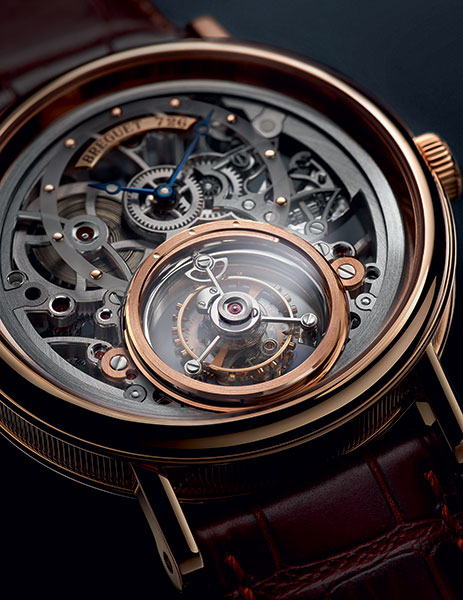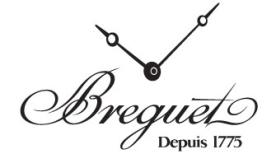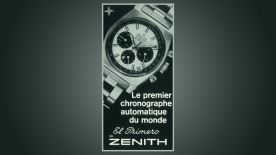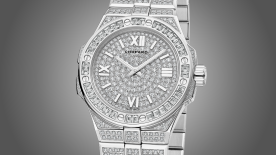When Breguet’s founder, Abraham-Louis Breguet, invented the tourbillon, which he patented in 1801, there is no doubt that his invention was resolutely purposeful. Throughout his life, the polestar for his many innovations was function and the tourbillon was no exception. It was created to address one of timekeeping’s most difficult problems, rate changes caused by the force of gravity acting on the timekeeping components of the watch. Brilliant in its conception, Breguet’s tourbillon rotated the timekeeping components constantly so that rate errors caused by gravity would be cancelled out. The logic lying behind Breguet’s invention holds as true today as it did more than 200 years ago. Not only is it honored by the whole of the watchmaking world offering tourbillon designs that hew to the conception of the original, even the name “tourbillon”, appended to the mechanism by Breguet himself, is used by all who endeavor to build them.
However practical and focused on chronometry the tourbillon may have been when first created, reasons that are undiminished after the passage of two centuries, no one can deny the visual fascination of watching a tourbillon’s rotation on the face of a watch. The word “tourbillon” conjures up many notions of motion. Breguet chose the word as a reference to a celestial planetary system and its rotation around an axis, which is a perfect description of the theater of motion offered as a carriage rotates carrying within it the oscillating balance wheel and turning escapement. Breguet’s Double Tourbillon and Tourbillon Messidor both build on this visual experience and bring unique interpretations of the house’s original invention.
Double Tourbillon
Normally, as the adage goes, “the name says it all”. In the case of the Double Tourbillon, this maxim is only half right. Of course, the timepiece does, in fact, feature two tourbillons, housed within either a platinum or rose gold. 44 mm case, which feed a differential to generate the time display. More on the differential in a moment. But going beyond the presence of two tourbillons is an added complication. The plate on which the tourbillons are mounted rotates with the hour hand. The hour hand itself serves as the upper bridge for one of the tourbillons; its extension, in a different color, serves as the bridge for the second tourbillon. Following Breguet’s traditional style, the hour hand is classical in form with its “pomme”; the extension is given a mirror polish finish. Thus, the timekeeping components of the watch not only rotate once per minute, as they are turned within the carriages of each tourbillon, but as well rotate 360 degrees over a 12-hour period.

The construction to bring all of this motion about was unusually complex. An early trial of the core idea, building a timepiece with two balances (albeit simple balances as distinct from tourbillons), occurred in 1947. Built in the form of a model, the experiment was undertaken by the École Technique de la Vallée de Joux. It was not entirely successful as there were problems with the functioning of the two balances in the vertical position. This effort was described in Reinhard Mies’ book The Tourbillon. An analysis of this model showed that the use of a differen- tial to supply energy to the two balances lay behind the problems and greatly complicated the construction of the gear train.
Knowing this, Breguet’s movement designers set about exploring the range of alternatives which would avoid the issues seen with this 1947 design. They understood well that the most reliable construction would be one that was simple and direct, where energy supplied by the barrel would pass through a single gear train to the regulating system without an intermediate transmission. Thus, Breguet’s designers focused upon an approach where each tourbillon would have its own gear train leading from its own barrel. As well, the designers went a step further in having the hour hand carry with it both tourbillons, both gear trains and the two barrels. With this arrangement, the main plate turns with two complete tourbillon movements running independently of each other. Left to be addressed then was how to connect the two tourbillons together to display the time and to rotate the combination 360 degrees.
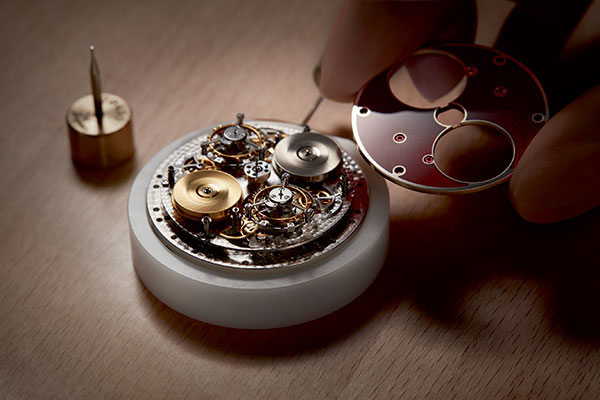
The solution to this problem lay in the design of a differential which would be placed in the gear train leading to the hands. In common with a simple movement, the gear train powering the hands requires only a very small amount of energy. Thus, adding more complicated gearing here would have only a very small effect on the running of the watch. This innovative design which makes the Double Tourbillon possible is now the subject of a patent filed by Breguet.
A differential assembly is a component that is able to combine separate gear trains into a third gear train. The statement of its function is rather simple. Its construction is both devilishly clever and, because its inner workings are seldom visible, generally not well understood by even dedicated watch connoisseurs. The cleverness lies in the differential’s ability to average the rates of the two separate gear trains in its output to the third train. For example, if one of the gear trains is running 2 seconds a day fast and the other 2 seconds a day slow, the output to the third train would be +/- 0 seconds. This property of averaging makes a differential an ideal construction for inclusion in the Double Tourbillon as it averages the rotations of the two tourbillons and transmits that rotation to the combination turning with the rotating main plate.
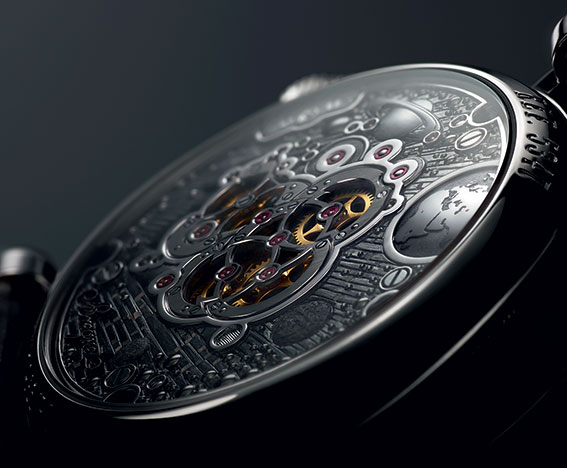
Rotating the dial/tourbillon/plate assembly addresses only part of the challenge. It remained to design a sytem to ensure that the rotation, the time setting, and time indication occur without undue play and, importantly, that the assembly with its relatively large mass, be shock resistant. A moment of thought explains why the Double Tourbillon’s rotation, time setting and indications are more difficult to accomplish than the mere rotation of an hour hand; the weight of a standard hand is trivially light, but the weight of the dial/tourbillon/plate assembly is not. In order to accommodate the additional weight of the assembly, the Double Tourbillon is “double geared”. All of the trains, from the two tourbillons to the differential and from the differential to the assembly, are built with two parallel sets of gears. An “elastic” gear has been incorporated into each of these three trains to build tension into the system. This gear actually consists of two gears, closely spaced together and connected by a small spring; one of the gears is connected to the time indication, the second generates a constant opposing force to the first. Through this connection, any displacement in response to a shock is instantly corrected.
This construction of the time indication gear train with its differential and double compensation gear guarantees perfect running of the movement, without compromise, nothwithstanding its complexity. Through the clear case back, the movement designers open worked the bridges so that the owner can admire and appreciate the double gear and observe its functioning during the setting of the time.
There were additional issues to be confronted: the barrels themselves and their winding system. Although it is true that the running rate of the watch is the average of the two movements, that does not imply that the unwinding of the two barrels will be identical since there may be a variance in the running of the two movements. How do you wind two separate barrels which may be in different states of unwind in a way to ensure both will be fully wound? The answer was to connect them together, of course, linked to the crown. However, simply connecting one barrel to the crown and blocking it when fully wound would not guarantee that the second barrel would be fully wound at the same time. The solution lay in the use of two different types of barrels. One of the barrels is of the type used for an automatic winding movement, the other the type for a manual wind. The difference between them is that an automatic winding barrel is equipped with a form of clutch. When the barrel is fully wound, further winding causes no harm as the mainspring will slip on the interior of the barrel drum. Breguet conceived a system where the automatic winding barrel will wind faster than the manual wind barrel. Thus, when the manual winding barrel is fully wound, it is sure that the automatic barrel will likewise be fully wound. Then to provide further assurance against misuse from over winding the manual barrel, a safety system clutch has been added to the crown. If the watch were to be wound past full, a special dynamometric torque limiting system of the crown will slip thereby protecting the manual wind mainspring.
Breguet has created a new design for the solid gold guilloché dial with a pattern uniquely reserved for the Double Tourbillon. Of course, the classic slivered color is offered, but at the 2016 Basel fair, Breguet introduced new variants that apply a colored translucent enamel layer above the guilloché. Several colors—gray, blue and red—are available. Art has been brought to the back of the watch as well. The back of the fixed main plate has been hand carved with depictions of the planets and stars.

Tourbillon Messidor
A century ago, so-called “mystery” clocks were all the rage. These clocks presented hands which seemingly rotated in space. There was no visible connection between the hands and the rest of the movement, which, of course, had to be there. The secret or, if you will, the “mystery”, was in the use of transparent disks to power the hands. The movement, hidden in the base, would be geared to the disks, allowing the hands to turn as they showed the time.

The Tourbillon Messidor was inspired by the ideas behind these vintage clocks, but with a Breguet twist. Rather than have mystery hands, which, after all, was a design that was not new, the Messidor would have a mystery tourbillon. This would be a tourbillon that would seemingly float and go about its complex motion in space with no visible connection to the rest of the movement.
There is a story behind Breguet’s choice of the name “Messidor” for its mystery tourbillon. Breguet did not want to use the word “mystery” as that might tie to the history of other watchmakers who created mystery clocks and because the mystery of this tourbillon should be distinguished from the mystery hands of others. “Messidor” was a perfect choice since that name ties to the filing of Breguet’s original patent filing for the tourbillon in 1801. The French Revolutionary calendar was then in force, which necessitated marking the date as “7 Messidor An 9” (7 Messidor year 9; June 26th, 1801).
The key to achieving a mysterious tourbillon was in the use of sapphire. The tourbillon is mounted between two sapphire plates. The cage itself is attached to a third sapphire plate and it is this plate which is engaged with the watch’s gear train. The edge of this disk is fitted with brass teeth (the traditional material for watch wheels), engaged to a wheel at the 7 o’clock position. As this is a mysterious construction, the ring of brass teeth and the connection to the wheel linked to the remainder of the movement is hidden by the gold bezel surrounding the tourbillon aperture.
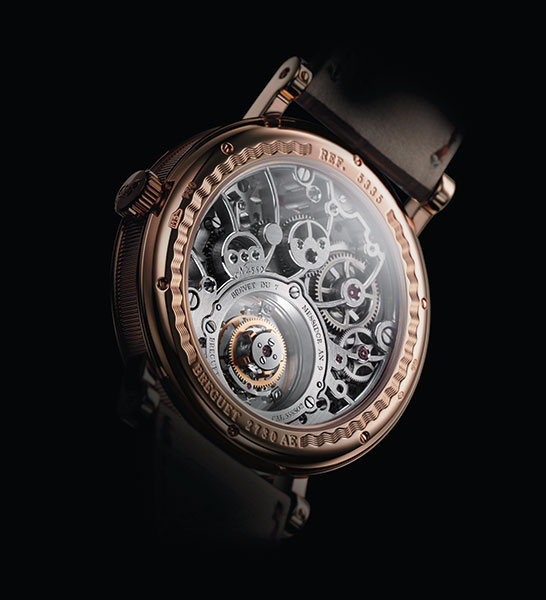
There are many aesthetic dimensions going well beyond the tourbillon turning in space. The dial of the Messidor timepiece is in sapphire offering a view from the dial side of the fine hand skeleton work of the movement. In spite of its historical name, the finishing style of the open worked movement is thoroughly contemporary. Of course, traditional hand-filed anglage is applied to all the edges of the components. And remember that with open worked bridges, there is more than twice as much anglage finishing as in a standard movement since the bridges have not only outer edges but inner edges as well. The tourbillon cage and the bridge supporting the barrel have mirror polishes; the rest of the movement features fine hand brushed surfaces.
So as to maximize the view of skeletonized movement within the 40 mm case, the chapter ring appears as translucent frosting on the sapphire dial. Several of the hour markers are fashioned in metalized sapphire.
